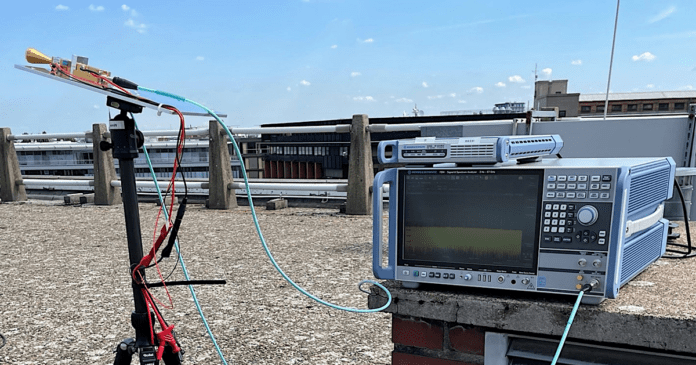Korean tech company LG Electronics said it has successfully demonstrated the transmission and reception of wireless “6G” terahertz (THz) data over 100 meters in an outdoor setting.
6G systems do not technically exist because they have not yet been standardized, but terahertz frequencies — beyond millimeter wave — are being researched to be part of future systems.
In a release, LG said that its work was achieved in collaboration with Germany research lab Fraunhofer-Gesellschaft, on August 13 with the data traveling between Fraunhofer Heinrich Hertz Institute (HHI) and the Berlin Institute of Technology in Germany.
LG noted that because terahertz frequencies have a short range and experiences power loss during transmission and reception between antennas, one of the biggest challenges for the future of wireless 6G is the need for power amplification to generate a stable signal across ultra-wideband frequencies. The power amplifier developed by LG, Fraunhofer HHI and Fraunhofer Institute for Applied Solid State Physics (IAF) was crucial to the success of this latest test, the Korean company added.
The power amplifier is capable of generating stable signal output up to 15 dBm in the frequency range between 155 to 175 GHz. LG noted that it was also successful in demonstrating adaptive beamforming technology, which alters the signal’s direction in accordance with changes to the channel and receiver position; as well as high-gain antenna switching, which combines output signals of multiple power amplifiers and transmits them to specific antennas.
“The success of this test demonstrates that we are ever closer to the successful application of terahertz radio communication spectrum in the upcoming 6G era,” said Dr. I.P. Park, president and CTO of LG Electronics. “Our successful partnerships with local and global research institutions and organizations to advance the development of 6G capabilities have been very rewarding.”
In 2019, LG established the LG-KAIST 6G Research Center in partnership with the Korea Advanced Institute of Science and Technology (KAIST).
Earlier this year, LG and KAIST partnered with U.S.-based test and measurement firm Keysight Technologies with the aim of carrying out research on future 6G technologies.
Under the terms of the agreement, the three partners will cooperate in developing technologies related to terahertz frequencies, widely seen a key frequency band for 6G communications, which have not yet been standardized. The partners aim to complete 6G research by 2024.
LG previously said that 6G is expected to be commercialized in 2029. LG also noted that future 6G technologies will provide faster data speed, lower latency and higher reliability than 5G, and will be able to bring the concept of Ambient Internet of Everything (AIoE), which provides enhanced connected experience to users.
Last year, the government of South Korea said it aims to launch a pilot project for not-yet-standardized 6G mobile services in 2026. The Korean government expects 6G services could be commercially available in Korea between 2028 and 2030.
The Korean government’s strategy for 6G consists of preemptive development of next-generation technologies, securing standard and high value-added patents, and laying R&D and industry foundations. The government of Korea reportedly expects to invest a total of KRW 200 billion (currently $179.2 million) between 2021 and 2026 period to secure basic 6G technology.
The government selected five major areas for the pilot project: Digital healthcare immersive content, self-driving cars, smart cities and smart factories.

